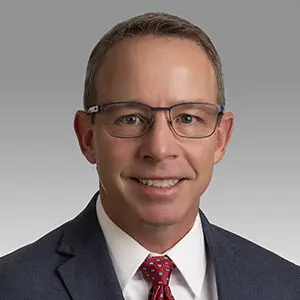Avoid the 5 common valuation mistakes
For many physicians and dentists, their private practice represents not just a place of work but the culmination of years of education, sacrifice, and relationships. When it comes time to sell, merge, retire, or bring on partners, many are surprised—and sometimes disappointed—by the actual market value of their practices. Value follows earnings and transferability—not just size or shiny equipment. A realistic valuation shapes your wealth plan and a buyer’s financing options. We will help you get there.
Common Misconceptions about Practice Value
1. Higher revenues don’t mean a higher valuation
Gross revenue is a poor standalone indicator of value. While revenue is important, what buyers care most about is profitability—specifically, adjusted earnings (commonly EBITDA or Seller’s Discretionary Earnings). A high-revenue practice with bloated overhead or inefficient billing processes may be worth less than a smaller, leaner operation.
2. Prestige doesn’t mean a premium price
Reputation certainly adds to goodwill, but unless it translates into consistent, transferable cash flow, it holds limited tangible value. Buyers often focus on what revenue is likely to be retained post-transition. If patients are loyal to you and not the practice, goodwill may walk out the door when you do.
3. New equipment doesn’t mean higher profit
While modern equipment and well-maintained facilities can make a practice more attractive, they rarely drive valuation significantly unless the practice is asset-heavy (like in radiology or oral surgery). The true driver is how well those assets generate profit. A $200,000 piece of equipment that isn’t fully utilized might actually be a drag on value.
4. Different practices have different results
No two practices are identical. Location, payer mix, specialty, staffing, referral sources, and growth potential all influence valuation. Anecdotal evidence from peers can set unrealistic expectations unless you’re comparing truly similar operations.
5. Your experience may not financially impact your profit
Longevity builds credibility, but unless it comes with systems, patient loyalty, and transferable operations, experience alone doesn’t increase value. Ironically, a solo practice heavily reliant on an aging owner might be riskier (and therefore less valuable) to a buyer.
Benchmarks for estimating practice value
Despite the nuances, healthcare practice valuations often start with some basic benchmarks to frame expectations. These are ballpark starting points, not final answers; a more formal valuation will refine them.
What these benchmarks measure
- Collections-based ranges estimate value as a share of recent net collections.
- Dental practices: ~60% to 80% of last 12 months’ net collections.
- Primary care: 30% to 50%.
- Specialty practices (e.g., dermatology, ENT, cardiology): ~50% to 80%.
These ranges work best when margins are healthy, the patient base is stable, and the practice is not overly dependent on the owner.
SDE multiples apply to small-midsize practices. SDE (Seller’s Discretionary Earnings) equals earnings before taxes, interest, depreciation, and amortization plus the owner’s compensation/benefits. Most small to mid-sized practices sell for ~1.5x to 3x SDE, depending on risk, growth prospects, and scalability.
EBITDA multiples apply to larger groups or consolidation scenarios. EBITDA is earnings before interest, taxes, depreciation, and amortization. EBITDA multiples range from 4x to 8x and sometimes are higher in specialties like dermatology, ophthalmology, or dental specialties, especially when private equity is involved.
Asset-Based Valuation (Less Common) focuses on the value of tangible assets minus liabilities. It’s most relevant when a practice is shutting down or has no ongoing revenue (i.e., asset sale only).
How to read these numbers.
Treat them as directional. If your collections-based figure and your SDE/EBITDA multiple point to similar values, that consistency boosts confidence. If they diverge, diagnose why (owner reliance, payer mix, coding/RCM leakage, staffing costs, or underutilized equipment).
What moves value up.
Predictable, recurring cash flow; a tenured team with documented, transferable processes; efficient billing and revenue cycle; diversified referral and payer mix; a clear path to grow without heavy new investment; and the seller’s willingness to stay part-time during transition.
What evaluators actually weigh (per Nathan Courtney)
According to Nathan Courtney, Transitions Consultant at Legacy Practice Transitions, “Most evaluators use income-based valuation methods to evaluate a practice. This approach is not limited simply to an analysis of the historical financial information, but also takes into consideration many other elements of the practice that contribute or detract from value such as: the type, age, amount, and condition of clinical and office equipment, supplies and furniture, outstanding accounts receivable balances, fee schedules, management systems, active patient count, location, real estate and lease considerations, facility size and condition, practice reputation and philosophy, production by procedure, employee experience and longevity, market and economic factors that may affect the practice value and desirability.”
Putting it into practice
Valuing a medical or dental practice isn’t exact. Benchmarks are useful to orient, but serious buyers and sellers should engage an industry specific appraiser or broker to refine the number —and the “why” behind it. Most importantly, owners should plan years in advance if they hope to maximize value—working to reduce owner dependency, improve margins, and build sustainable systems that can survive beyond their personal involvement.
Whether you’re a solo practitioner eyeing retirement or part of a group practice exploring your next move, understanding what actually drives value will help you make informed, financially sound decisions. Talk with 1st Source Bank about a valuation readiness review and get a concise, prioritized plan for your next 12–24 months.

